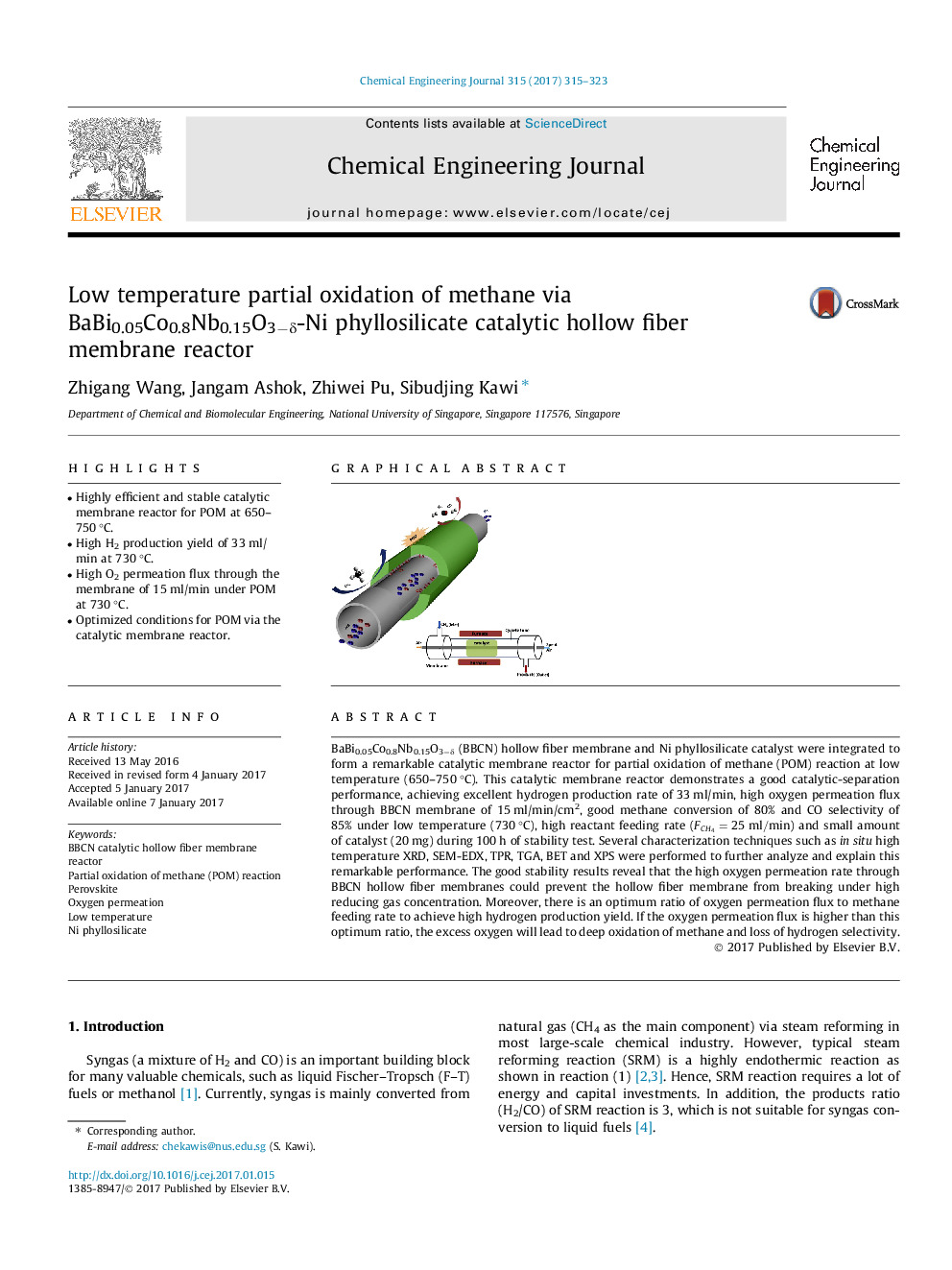| Article ID | Journal | Published Year | Pages | File Type |
|---|---|---|---|---|
| 6466363 | Chemical Engineering Journal | 2017 | 9 Pages |
â¢Highly efficient and stable catalytic membrane reactor for POM at 650-750 °C.â¢High H2 production yield of 33 ml/min at 730 °C.â¢High O2 permeation flux through the membrane of 15 ml/min under POM at 730 °C.â¢Optimized conditions for POM via the catalytic membrane reactor.
BaBi0.05Co0.8Nb0.15O3âδ (BBCN) hollow fiber membrane and Ni phyllosilicate catalyst were integrated to form a remarkable catalytic membrane reactor for partial oxidation of methane (POM) reaction at low temperature (650-750 °C). This catalytic membrane reactor demonstrates a good catalytic-separation performance, achieving excellent hydrogen production rate of 33 ml/min, high oxygen permeation flux through BBCN membrane of 15 ml/min/cm2, good methane conversion of 80% and CO selectivity of 85% under low temperature (730 °C), high reactant feeding rate (FCH4=25ml/min) and small amount of catalyst (20 mg) during 100 h of stability test. Several characterization techniques such as in situ high temperature XRD, SEM-EDX, TPR, TGA, BET and XPS were performed to further analyze and explain this remarkable performance. The good stability results reveal that the high oxygen permeation rate through BBCN hollow fiber membranes could prevent the hollow fiber membrane from breaking under high reducing gas concentration. Moreover, there is an optimum ratio of oxygen permeation flux to methane feeding rate to achieve high hydrogen production yield. If the oxygen permeation flux is higher than this optimum ratio, the excess oxygen will lead to deep oxidation of methane and loss of hydrogen selectivity.
Graphical abstractDownload high-res image (91KB)Download full-size image
